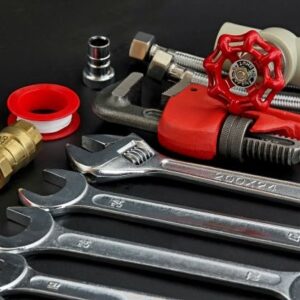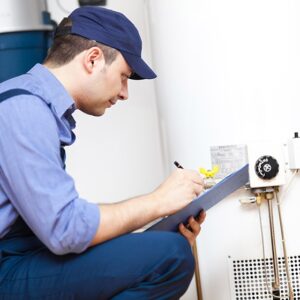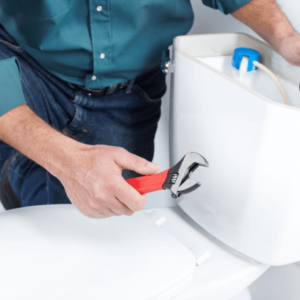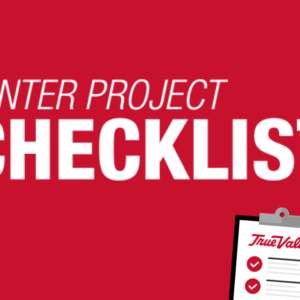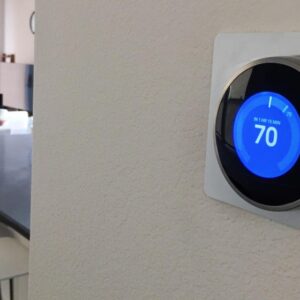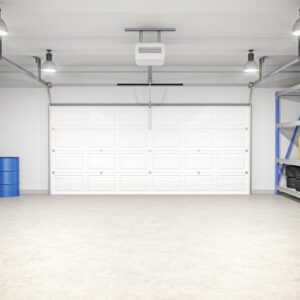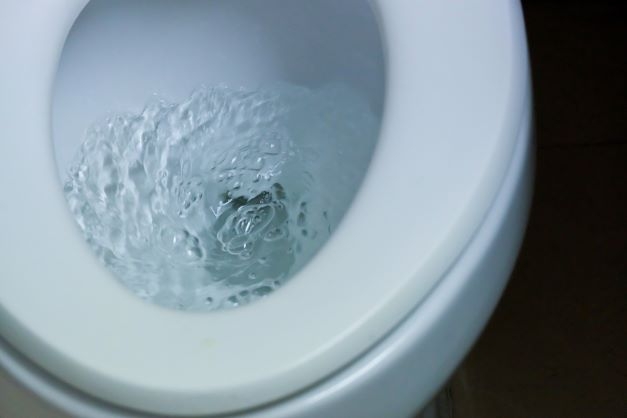Why is my toilet suddenly flushing slowly? How do I fix a slow-flushing toilet? These are some common questions people have when they experience this frustrating problem. Fortunately, most toilets that flush slowly are easy to fix without the expensive help of a plumber. This guide will cover some common issues that cause toilets to flush slowly and show you how to remedy them.
Common Slow-Draining Toilet Issues
If your toilet isn’t flushing normally, there are several potential reasons. These are the most common problems that cause a slow flushing toilet:
- Defective flush valve or flapper
- Clogged drain vent
- Mineral buildup
- Low water level
- Clogged drain
- Sewer line problem
Why Is My Toilet Suddenly Flushing Slowly?
Although mineral buildup sometimes causes a gradual decrease in drain speed, a sudden change is possible. The culprits of a sudden change are often low water level or a clog.
Why Is My Toilet Not Flushing But Not Clogged?
If your toilet isn’t clogged but is draining slowly or not flushing, something may be broken. There are several potential mechanical issues you can fix. However, if those don’t work, there may be a problem with the drain below the toilet. If the toilet flushes slowly and incompletely often, it may be a drain slope issue. You’ll need a plumber to fix that problem.
Why Are My Sink and Toilet Both Draining Slowly?
A toilet and sink draining slowly can mean both are separately clogged. If every toilet and sink drains slowly in your home, the culprit may be the sewer line or drain. For instance, if your kitchen sink also drains slowly, it may be a sewer problem. Sewer line problems can cause foul odors, saturated areas in your yard and other issues.
In some cases, there can also be a clog that leads to a toilet backup in the sink. When this happens, the cause is the sink being connected to the toilet’s waste line. This affects the sink’s ability to drain normally.
How Do I Fix a Slow-Flushing Toilet?
You can solve most slow-toilet flush problems with a little detective work and patience. If your toilet flushes slowly, you can use these troubleshooting steps to find the source and fix it. If the bathroom sink won’t drain or is backed up, skip to the appropriate steps.
1. Check the Water Level
Fortunately, one of the most common problems is the easiest to fix. Toilets require a certain amount of water to flush. Without ample water for the correct force, you’ll notice your toilet draining slowly. You can usually fix this issue by adjusting the toilet float. It’s the ball with a rod attached to it. When the water reaches a specific point, that device turns off the flow. Adjust the float ball to an appropriate level to allow the tank to fill enough for a more forceful flush.
2. Check for Simple Mechanical Issues
In some cases, a toilet flushing slowly or not flushing may stem from simple issues. For example, sometimes the water shutoff valve is turned low. A child may have curiously turned it, or an object near it could have fallen and moved the knob. Once you rule out that possibility, check these components.
Water Outlets: Check to see if there are clogged water outlets in the bowl. Mineral buildup can clog these small holes, and it’s especially common in homes with hard water. Use vinegar and a stiff brush to break up the mineral deposits. Try flushing it again when they’re clean.
Flapper and Chain: It also helps to inspect the flapper, chain, or internal flush components to make sure they’re in place. When there’s a problem with components in the flush assembly, it can reduce water flow into the toilet. You’re better off replacing the assembly if the problem keeps happening. You can find replacement kits at a hardware store. If everything is in order, there may be a clog.
3. Check for a Clog
When your toilet won’t flush at all, you can usually see the source of a clog. However, partial clogs can be harder to see and will result in a toilet flushing slowly. If you suspect a partial clog, start with a plunger. Be sure to use the right type. Black plungers with narrower suction cups are for sinks, and wider ones are for toilets.
Another option if the plunger doesn’t work is to use detergent and hot water. Use a liquid dish detergent. Heat a gallon of water on the stove, and squirt about one-half cup of dish soap in the toilet. The water should be hot but not boiling. Pour it into the toilet. Wait at least 15 minutes before flushing. You can also try using a drain snake.
If these steps fail after you’ve ruled out simple mechanical issues, you’ll need to call a plumber. There may be a tough clog, a problem with the sewer line, or something else.
4. Check for Sink Issues
If you also have a slow-draining bathroom sink, first try to rule out separate clogs. A toilet flushing normally after following the previous steps is a good sign you’re dealing with two issues. How do you fix a slow-draining sink?
If you have a stopper, pull it out. You can usually clean that and solve the problem. However, if that doesn’t work, the best way to unclog a sink is with vinegar and baking soda. Pour one-half cup of baking soda and one-half cup of vinegar into the sink. Put a disposable rag over the drain, and wait 15 minutes. Pour a pot of boiling water down the drain. If it starts draining better, run the hot water for a few more minutes. Will vinegar fix a slow drain all the time? It may not. However, you should still avoid chemicals.
Sometimes, the solution for how to fix a slow-draining sink is with a snake. There’s usually hair and other residue clogging the drain. You can find inexpensive toothed sink drain snakes at hardware stores. If that fails, you can try a plunger or check the P-trap. If these steps don’t work, call a plumber.
If your slow sink drain is accompanied by an unpleasant backup with a clogged toilet, there’s a simple reason. The obstruction is downstream, and water pushes air through the sink vent. The pipe fills, and the toilet backs up since the sink’s diameter is smaller than the toilet drain’s opening. You can cautiously plunge the toilet or snake it if you feel comfortable. Be aware that as you deal with the toilet clog, the sink may back up more. Many people feel more comfortable calling a plumber to handle this type of issue. When a bathroom sink is clogged for this reason, it should drain again when the toilet drains normally.
Now that you know what to do when your toilet or sink doesn’t drain, you can find the supplies you need. Head to your local True Value store to stock up on things to fix a slow-draining sink or toilet.

